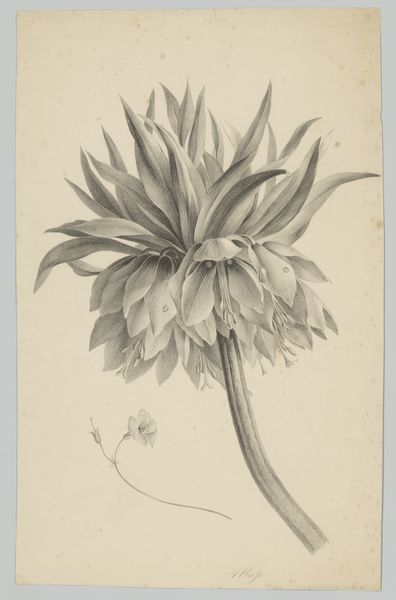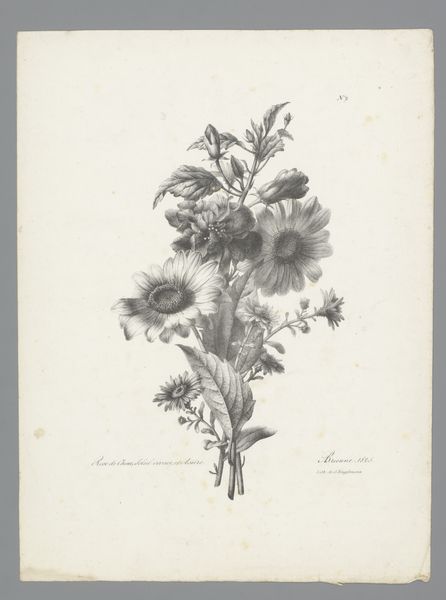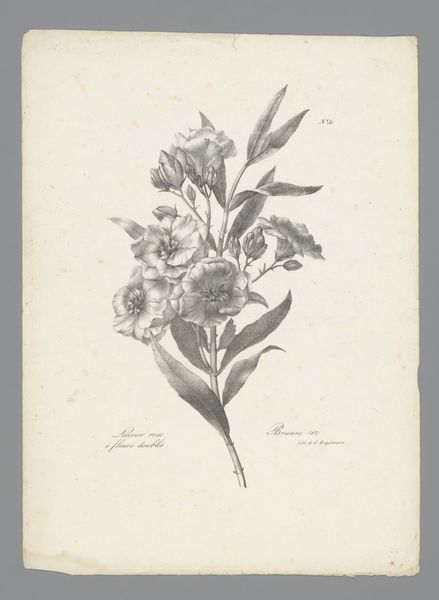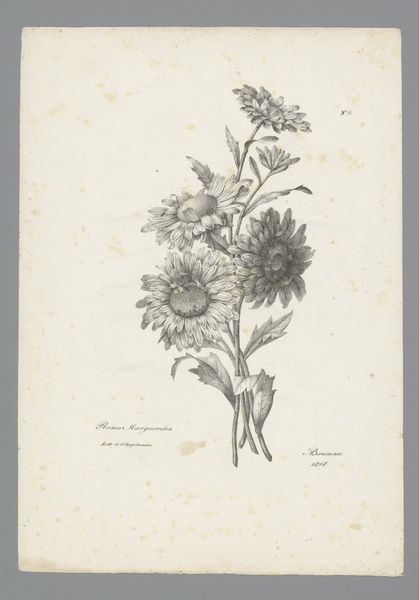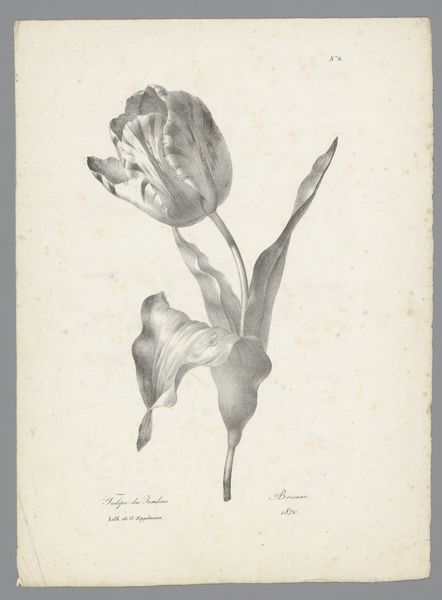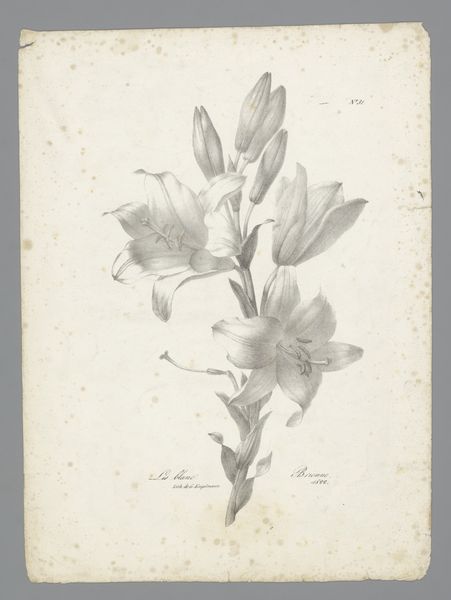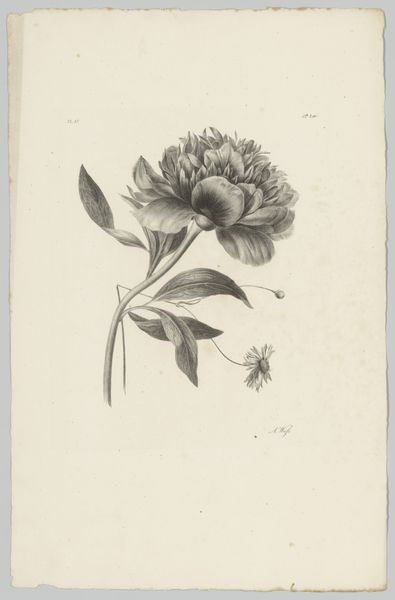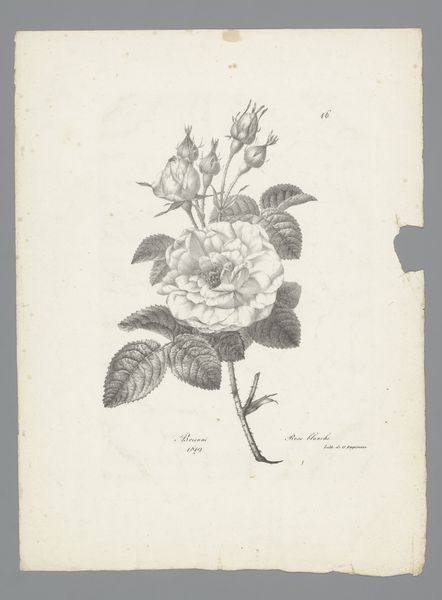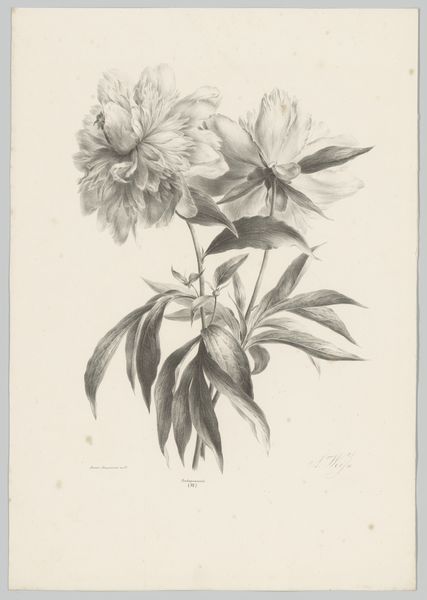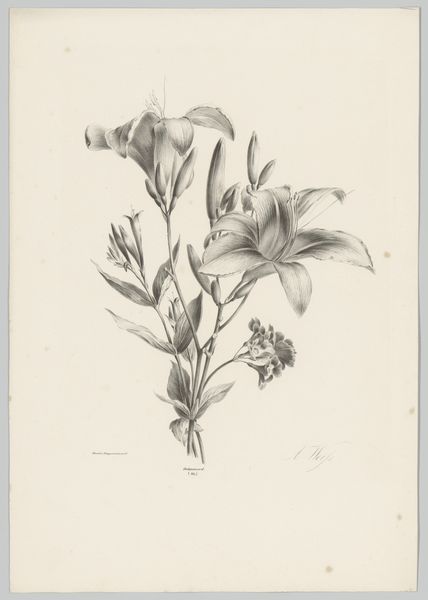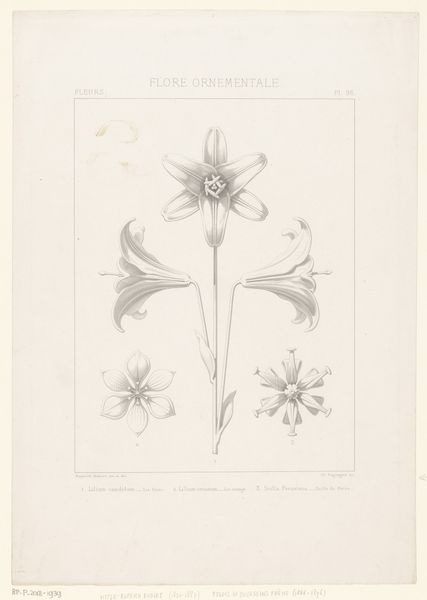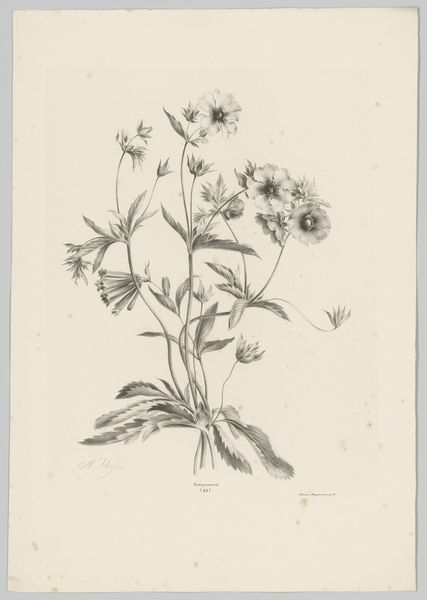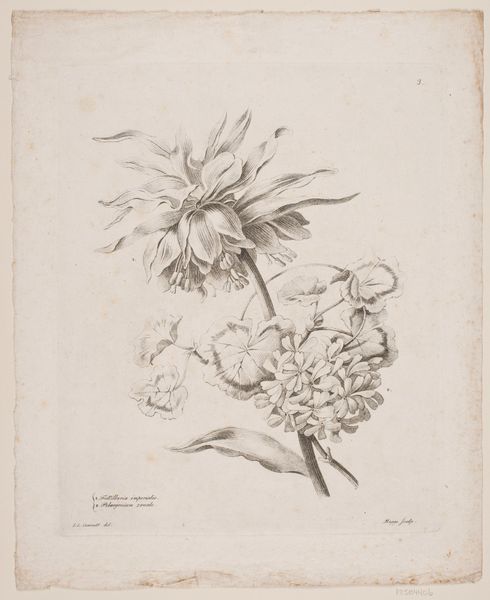
drawing, paper, pencil
#
drawing
#
flower
#
paper
#
romanticism
#
pencil
Dimensions: height 365 mm, width 265 mm
Copyright: Rijks Museum: Open Domain
Curator: I'm immediately struck by the delicate detail and tonal range the artist achieves with just pencil on paper. It has an ethereal quality despite its realism. Editor: Indeed. Here we have "Keizerskroonbloem", a drawing made in 1820 by Auguste Piquet de Brienne, now held at the Rijksmuseum. It offers a glimpse into the world of botanical illustration during the Romantic era. Curator: Looking at it purely from a structural perspective, the crown imperial flower presents a fascinating arrangement. The drooping blossoms balanced by the upward thrust of the foliage create a wonderful visual tension. Note the precise control of line weight to define form and texture, creating depth. Editor: The very act of meticulously documenting botanical specimens like this was a deeply cultural act. During this period, the elite held botanical drawing in high esteem, due to Europe's engagement with colonial botany and expansion of horticultural practices. Images such as these played a crucial role. Curator: Consider how the light dances across the surface. The subtle gradations build an impression of three-dimensionality, focusing our attention to specific focal point with light—almost a study in light itself. Editor: And this dedication to observation served not just aesthetic but political and scientific purpose, as Europeans sought to understand and sometimes dominate the natural world during this time of discovery and empire-building. Curator: Ultimately, it transcends the mere botanical record, achieving a sense of idealised naturalism; a romantic vision of the natural world carefully structured. Editor: Yes, it represents how people’s connection with the natural world was cultivated by burgeoning empires and their artistic representations. Auguste Piquet's art encapsulates all this historical baggage, giving us pause to reflect today. Curator: An evocative piece both for the intellect and the eye. Editor: An intersection of art, science, and power – an insight.
Comments
No comments
Be the first to comment and join the conversation on the ultimate creative platform.
